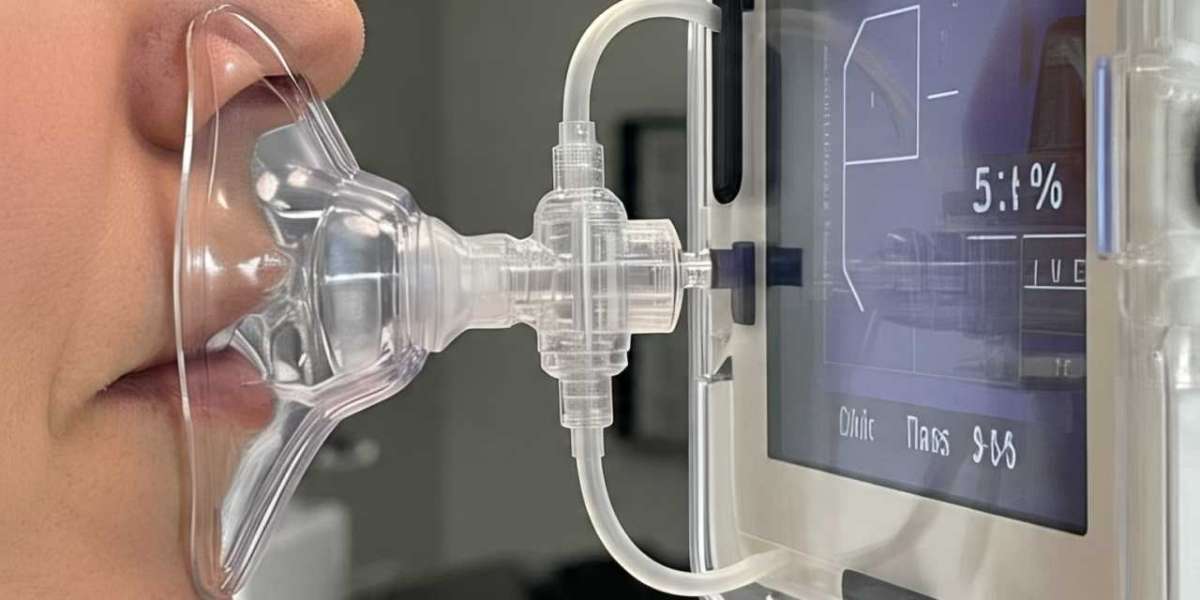This tool, though small, plays a big role in health checks, athletic training, and scientific studies. In the following sections, we’ll explore what a breathing analysis nose clip is, why accurate breathing data matters, how it works, where it’s used, its benefits, and how to choose and care for one. You’ll also get a conclusion and helpful questions and answers—all in easy, friendly language, just like talking to a friend.
What Is A Breathing Analysis Nose Clip?
A Breathing Analysis Nose Clip is a U-shaped device made from soft, lightweight materials like silicone or rubber. It’s designed to gently pinch the sides of your nostrils, preventing air from escaping or entering through your nose. Why is this important? When you take a lung test—like blowing into a spirometer or wearing an exercise mask—some air might slip out of your nose. Even a small leak can skew the results. The nose clip fixes that issue by forcing all breaths through your mouth, which is connected to measuring equipment.
You might wonder if wearing a clip hurts. In most cases, it doesn’t. High-quality clips have cushioned pads that spread pressure gently, making the seal nearly painless and comfortable. Most people forget they’re wearing it after a few seconds.
These clips can be reusable or disposable. Reusable ones can be washed in warm water with mild soap, while disposable clips are hygienic for single use. Though tiny, this tool supports big decisions—medical diagnoses, training programs, and research findings. By using the breathing analysis nose clip, professionals ensure that every puff of air is counted, not lost—turning small breaths into powerful information.
Why Accurate Breathing Data Really Matters
Getting accurate breathing data isn’t just about science—it’s life-changing. For example, when doctors test lung function, they look at numbers like how much air you blow out in one second (FEV1) or your total lung capacity. These numbers guide treatment and medication choices. If air leaks through your nose, these numbers could be wrong—leading to delayed care or incorrect diagnosis. The Breathing Analysis Nose Clip steps in to ensure the readings reflect your real lung ability.
For athletes, accurate airflow data shapes training programs. A runner may use test results to set heart-rate goals. If readings are off due to nasal breathing, trainers could mistakenly push the athlete too hard—or not hard enough. That could lead to injury or poor progress. The clip guarantees precision.
In research, accuracy is even more critical. Studies on pollution, altitude, or new breathing techniques depend on flawless data. A nose leak can ruin weeks or months of work, wasting funds and effort. Research teams use nose clips to eliminate that risk.
Even home lung monitors benefit. A person tracking breathing after an illness could make wrong choices if test results are skewed. The nose clip helps avoid that. Across medicine, sport, and research, high-quality data leads to better decisions—starting with that gentle pinch on the nose.
How Does The Nose Clip Work Exactly?
The mechanics of a Breathing Analysis Nose Clip are simple but clever. It has springy arms and cushioned tips. Squeeze it open, position it on the soft part of your nostrils—not too high, not too low—and let go. The clip gently squeezes the sides of your nose, sealing your nostrils. Because the tips are soft, they press snugly without pinching too hard. The seal lasts as long as you breathe with it.
During a test, your mouth attaches to a sensor or mask. The equipment tracks airflow, oxygen intake, and carbon dioxide output. The clip ensures all that air comes through those sensors. If any air sneaks through the nose, the data becomes incomplete—and incorrect.
Some advanced clips include small sensors that check seal quality in real time—helpful in lab settings. Others come with tiny elastic straps to stay secure during a treadmill test. But the essential idea is the same: stop nose breathing, direct air through sensors, and get precise measurements. After the test, you remove the clip, clean if reusable, and store it safely. The entire process—from clip to clean results—happens in under five minutes.
Common Places Where They’re Used
The Breathing Analysis Nose Clip shows up in places you'd expect—and some you might not. In hospitals, it's standard during lung function tests, bronchial reversibility exams, or sleep studies. Technicians clip it on every patient before starting.
In sports centers, athletes wear them during VO₂-max or metabolic testing. You’ll also find them in university kinesiology labs or high-performance centers where coaches evaluate breathing under stress.
Research labs count on these clips. Whether testing pollution, altitude response, or inhaler efficacy, they help maintain consistent airflow reading. Sleep clinics use them overnight to analyze breathing patterns and apnea events.
Even classrooms may use them—high-school biology classes sometimes measure students’ lung volumes using simple spirometers and nose clips. And for home use, self-testing kits often include disposable nose clips, letting patients track breathing progress safely.
Benefits Of Using A Nose Clip Everyday
Although small, the Breathing Analysis Nose Clip offers powerful advantages:
Reliable Results: It seals off the nose so measurements reflect true lung capacity.
Comfort First: Padded arms ensure gentle pressure—it rarely causes pain.
Easy for Everyone: Just pinch and place—any age group can use it.
Cost-Effective: Many quality clips are affordable and durable, saving clinics money.
Hygienic Options: Disposable clips prevent cross-infection; reusable ones just need rinsing.
Versatile Tool: From medicine to marathon training, music breathing, or mindfulness, it supports it all.
A tiny device, but it prevents big errors—making it a trusted part of almost every serious breathing test.
How To Choose And Care For A Clip
Choosing a good Breathing Analysis Nose Clip is simple:
Material: Soft silicone or rubber cushions are kind to skin.
Fit: Clips come in small, medium, and large or are adjustable—make sure it’s snug but not too tight.
Type: Disposable for clinics and reusable for self-use—select based on your needs.
Spring tension: Too tight causes pain; too loose leaks. Try before you buy if possible.
Care tips:
Clean reusable clips after each use with mild soap, rinse, and air-dry.
Avoid harsh disinfectants that degrade silicone.
Store in a clean, tinted case to avoid sunlight damage.
Replace clips after a year or if pads crack—old materials can lead to leaks.
A bit of care extends clip life and preserves data integrity—on everything from daily breathing runs to long-term medical plans.
Conclusion
The Breathing Analysis Nose Clip may seem like a simple plastic gizmo, but it has mighty importance. By gently sealing the nostrils, it ensures every breath during testing is measured and accounted for. This makes the difference between trustworthy lung care, effective fitness plans, or reliable research findings—and guesswork or errors. Small, affordable, and almost invisible once in place, the clip keeps watch over each test, ensuring no breath is lost. Whether used in clinics, labs, or homes, this quiet tool plays a powerful role in turning simple respiration into vital insight.
Frequently Asked Questions
Q1: Is wearing a nose clip painful?
Not usually. With padded tips, good clips feel like a gentle pinch for a few seconds, then fade from awareness.
Q2: Can children wear these clips?
Yes—they come in child sizes or adjustable models. Always supervise their first few tries.
Q3: How often should I clean reusable clips?
After every session—wash with mild soap and water, then air-dry.
Q4: Do all breathing tests require nose clips?
Any accurate mouth-only test—spirometry, VO₂ max, diffusion—needs it. Some less precise tests might skip it.
Q5: Where can I buy a quality breathing analysis nose clip?
Medical-supply stores, sports-science equipment shops, or reputable online retailers carry FDA- or CE-approved models.











